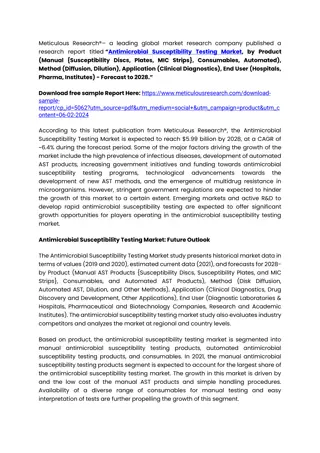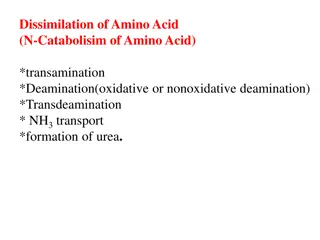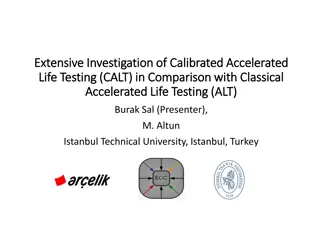
Quantitative Determination of ALT and AST in Liver Disease Screening
"Learn about the ALT and AST tests, their clinical significance, procedure, and how they are used in screening for liver disease. Explore the signs and symptoms of liver disease, the principle behind the tests, and the normal ranges of ALT and AST levels. Discover the importance of monitoring ALT and AST levels in managing liver disorders."
Download Presentation

Please find below an Image/Link to download the presentation.
The content on the website is provided AS IS for your information and personal use only. It may not be sold, licensed, or shared on other websites without obtaining consent from the author. If you encounter any issues during the download, it is possible that the publisher has removed the file from their server.
You are allowed to download the files provided on this website for personal or commercial use, subject to the condition that they are used lawfully. All files are the property of their respective owners.
The content on the website is provided AS IS for your information and personal use only. It may not be sold, licensed, or shared on other websites without obtaining consent from the author.
E N D
Presentation Transcript
Lab 3 ALT and AST Daheeya AlEnazi Cromatest Kit
Quantitative Determination of Alanine aminotransferase (ALT) Test is typically used to detect liver injury. It is often ordered in conjunction with aspartate aminotransferase (AST) or as part of a liver panel to screen for and/or help diagnose liver disease. Although ALT is more specific to the liver than is AST. ALT is often used to monitor the treatment of persons who have liver disease
Signs and Symptoms of liver disease: Weakness, fatigue Loss of appetite Nausea, vomiting Abdominal swelling and/or pain Jaundice Dark urine, light-colored stool
Principle L-Alanine + 2 Oxoglutarate ALT L- Glutamate + Pyruvate Pyruvate + NADH + H+ LDH Lactate + NAD+ +H2O The rate of decrease in NADH absorbance at 340nm is proportional to the ALT activity of the sample.
Clinical significance Hepatic disorders, high serum levels are found in hepatocellular disorder rather than on obstructive disorders. Cardiac tissue contains a small amount of ALT activity but serum levels usually remain normal in AMI. Test used for infectious and toxic hepatitis
procedure WR-ml (mix 4ml of R1+1ml f R2) Sample- l 1 100 Mix, incubate at 30 for 1 minute and read the absorbance at 340 nm against D.W, and after 3 min read the absorbance Calculation: A/min x 1746= U/L of ALT Normal Range: (ALT: at 30 C) Adult up to 25 U/L
Quantitative Determination of Aspartate aminotransferase (AST) L-Aspartate +2 Oxoglutarate AST > L- Glutamate+ Oxaloacetate Oxaloacetate + NADH +H+ MDH > L-Malate + NAD+ The rate of decrease of NADH absorbance at 340nm is proportional to the AST activity of the sample.
Clinical significance The AST found in highest conc. in heart muscle, liver and skeletal muscle. Smaller amounts are found in kidney, pancreas and erythrocytes. Clinical use: myocardial infarction, hepatocellular disease, and disorders of skeletal muscles.
procedure WR-ml(4ml R1+1ml R2) 1 Sample - l 100 Mix, incubate at 30 for 1 minute. Read initial absorbance of the sample, start the the stopwach and read absorbances at 1 minute intervals thereafter for 2 minutes. Calculate the difference between absorbances and the average absorbance differences per minute ( A/min)
Calculations A/min x 1746= U/L of AST Reference values: (at 30 C) Adult up to 25 U/L






















